Themed collection Best Papers 2019 – Environmental Science: Nano

In situ remediation of subsurface contamination: opportunities and challenges for nanotechnology and advanced materials
Engineered nanomaterials alone or in combination with other technologies may improve in situ subsurface remediation of legacy and emerging contaminants.

Environ. Sci.: Nano, 2019,6, 1283-1302
https://doi.org/10.1039/C9EN00143C
Metal–organic framework-based nanomaterials for adsorption and photocatalytic degradation of gaseous pollutants: recent progress and challenges
Design and engineering of metal–organic frameworks for the adsorption/degradation of inorganic toxic gases, organic vapors and particulate matter.

Environ. Sci.: Nano, 2019,6, 1006-1025
https://doi.org/10.1039/C8EN01167B
Recent advances regarding the impacts of engineered nanomaterials on the anaerobic ammonium oxidation process: performances and mechanisms
The impacts of engineered nanomaterials on the performance of the anaerobic ammonium oxidation process and their intoxication mechanisms are summarized.
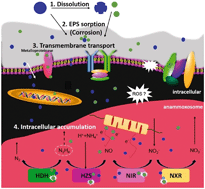
Environ. Sci.: Nano, 2019,6, 3501-3512
https://doi.org/10.1039/C9EN01009B
Emerging investigator series: connecting concepts of coinage metal stability across length scales
Materials with different dimensions can exhibit markedly different responses to their environment, even for the same material composition.
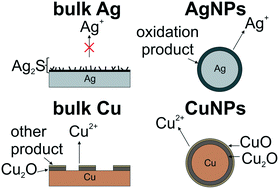
Environ. Sci.: Nano, 2019,6, 2674-2696
https://doi.org/10.1039/C9EN00407F
Recent advances in nano-enabled fertilizers and pesticides: a critical review of mechanisms of action
The use of nanomaterials in agriculture as nanofertilizers, nanopesticides, or nano-enabled sensors to increase crop yield is gaining increasing interest.
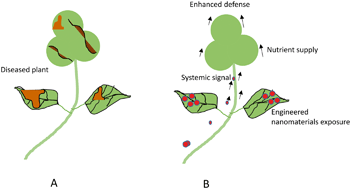
Environ. Sci.: Nano, 2019,6, 2002-2030
https://doi.org/10.1039/C9EN00265K
Detection of engineered nanoparticles in aquatic environments: current status and challenges in enrichment, separation, and analysis
The development of enrichment–separation–analysis technologies is the cornerstone of accurately detecting, effectively monitoring, and controlling ENPs in aquatic environments.
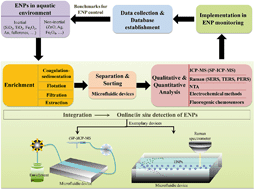
Environ. Sci.: Nano, 2019,6, 709-735
https://doi.org/10.1039/C8EN01086B
Uptake, translocation, and transformation of metal-based nanoparticles in plants: recent advances and methodological challenges
We review the uptake, translocation and transformation of metal based nanoparticles in higher plants, and present advanced analytical techniques and future perspectives in this field.
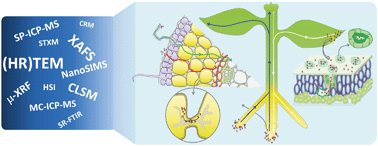
Environ. Sci.: Nano, 2019,6, 41-59
https://doi.org/10.1039/C8EN00645H
Bottom-up biofilm eradication using bacteriophage-loaded magnetic nanocomposites: a computational and experimental study
The combined experimental and computational study demonstrates an inverse relationship between phage-nanocomposite conjugate (PNC) size and biofilm eradication potential.
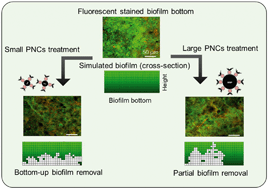
Environ. Sci.: Nano, 2019,6, 3539-3550
https://doi.org/10.1039/C9EN00827F
Can mineral growth by oriented attachment lead to incorporation of uranium(VI) into the structure of goethite?
Atomic and bulk scale measurements demonstrate that goethite grown by oriented aggregation does not readily incorporate U(VI) into structural sites.
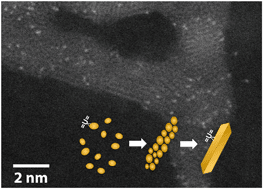
Environ. Sci.: Nano, 2019,6, 3000-3009
https://doi.org/10.1039/C9EN00779B
Proteomic, gene and metabolite characterization reveal the uptake and toxicity mechanisms of cadmium sulfide quantum dots in soybean plants
Cadmium sulfide quantum dots regulate nanomaterial-specific unique transmembrane transport system and metabolic processes in soybean plants.

Environ. Sci.: Nano, 2019,6, 3010-3026
https://doi.org/10.1039/C9EN00599D
High-flux nanofiltration membranes tailored by bio-inspired co-deposition of hydrophilic g-C3N4 nanosheets for enhanced selectivity towards organics and salts
NF membranes functionalized through bio-deposition of g-C3N4 nanosheets have enhanced water permeability, dye retention and salt transmission, showing great potential for sustainable treatment of highly saline textile wastewater.
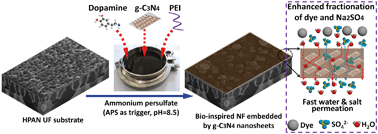
Environ. Sci.: Nano, 2019,6, 2958-2967
https://doi.org/10.1039/C9EN00692C
Determining what really counts: modeling and measuring nanoparticle number concentrations
This paper describes a comprehensive investigation of particle number concentrations including a multi-method comparison, theoretical modeling, and cellular dosimetry.
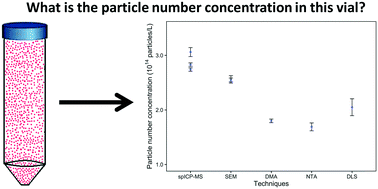
Environ. Sci.: Nano, 2019,6, 2876-2896
https://doi.org/10.1039/C9EN00462A
Engineered nanomaterials in the context of global element cycles
This article provides a bird's-eye-view of the status and scale of commercialized and nascent nanotechnologies in the context of global element cycles to prioritize and guide relevant environmental health research.
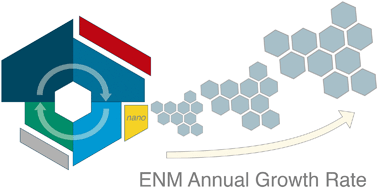
Environ. Sci.: Nano, 2019,6, 2697-2711
https://doi.org/10.1039/C9EN00322C
Accelerated Fenton-like kinetics by visible-light-driven catalysis over iron(III) porphyrin functionalized zirconium MOF: effective promotion on the degradation of organic contaminants
FeIII–TCPPCl-incorporated UiO-66 MOF could reliably achieve both photocatalysis and a Fenton-like reaction under visible light, with effective degradation against organic pollutants.
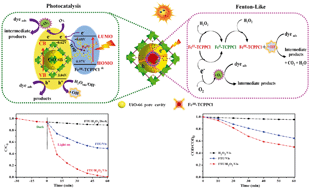
Environ. Sci.: Nano, 2019,6, 2652-2661
https://doi.org/10.1039/C9EN00460B
Template-free synthesis of oxygen-containing ultrathin porous carbon quantum dots/g-C3N4 with superior photocatalytic activity for PPCPs remediation
We report, for the first time, the fabrication of an oxygen-containing ultrathin porous carbon quantum dots/polymeric carbon nitrogen metal-free composite with a highly enhanced photoresponse.
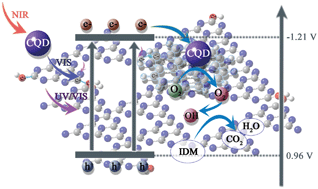
Environ. Sci.: Nano, 2019,6, 2565-2576
https://doi.org/10.1039/C9EN00509A
Neuronal damage induced by nanopolystyrene particles in nematode Caenorhabditis elegans
Our observations highlight the potential of nanoplastics in inducing damage on both development and functions of nervous system after long-term exposure.
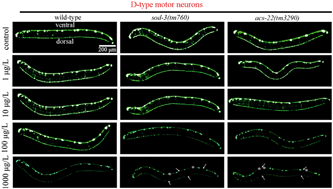
Environ. Sci.: Nano, 2019,6, 2591-2601
https://doi.org/10.1039/C9EN00473D
“Switching on” iron in clay minerals
We discovered a new mechanism explaining why iron in its oxidized form Fe(III) in clay minerals is reactive only in the presence of trace amounts of its reduced form—Fe(II).
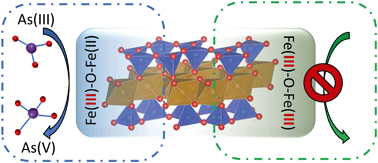
Environ. Sci.: Nano, 2019,6, 1704-1715
https://doi.org/10.1039/C9EN00228F
Fe/Mn nanoparticles encapsulated in nitrogen-doped carbon nanotubes as a peroxymonosulfate activator for acetamiprid degradation
Bimetallic Fe/Mn nanoparticles and N-doped carbon nanotubes in FeMn@NCNT synergistically activate peroxymonosulfate to form SO4˙−, ˙OH, O2˙− and 1O2 for decomposing acetamiprid.
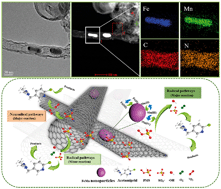
Environ. Sci.: Nano, 2019,6, 1799-1811
https://doi.org/10.1039/C9EN00220K
The food additive E171 and titanium dioxide nanoparticles indirectly alter the homeostasis of human intestinal epithelial cells in vitro
Repeated exposure to E171 or TiO2-NPs, in vitro, induce moderate inflammation and mucus secretion in intestinal cells.
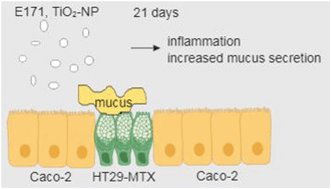
Environ. Sci.: Nano, 2019,6, 1549-1561
https://doi.org/10.1039/C8EN01188E
Secondary nanoplastics released from a biodegradable microplastic severely impact freshwater environments
Over the last five decades, plastics production has increased as a consequence of their use in strategic sectors causing damage on aquatic ecosystems.
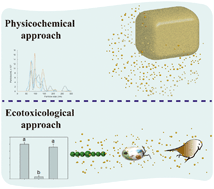
Environ. Sci.: Nano, 2019,6, 1382-1392
https://doi.org/10.1039/C8EN01427B
Ratiometric detection of heavy metal ions using fluorescent carbon dots
Classical methods for the detection of heavy metal ions in water are tedious and time consuming.
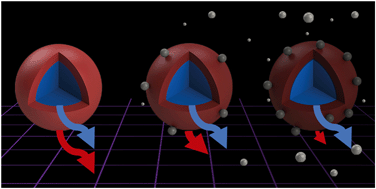
Environ. Sci.: Nano, 2019,6, 1121-1130
https://doi.org/10.1039/C8EN01418C
Extraordinary capacitive deionization performance of highly-ordered mesoporous carbon nano-polyhedra for brackish water desalination
Our mesoporous carbon single crystals exhibit an extraordinary capacitive deionization performance.
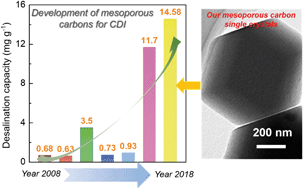
Environ. Sci.: Nano, 2019,6, 981-989
https://doi.org/10.1039/C9EN00017H
Photocatalytic ozonation mechanism of gaseous n-hexane on MOx–TiO2–foam nickel composite (M = Cu, Mn, Ag): unveiling the role of ˙OH and ˙O2−
The role of ˙OH and ˙O2− in the photocatalytic ozonation mechanism of gaseous n-hexane is disclosed based on experimental and theoretical methods.
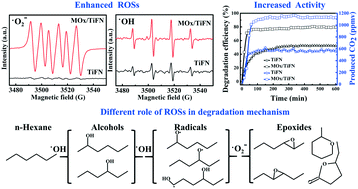
Environ. Sci.: Nano, 2019,6, 959-969
https://doi.org/10.1039/C8EN01291A
Rapid disinfection of E. coli by a ternary BiVO4/Ag/g-C3N4 composite under visible light: photocatalytic mechanism and performance investigation in authentic sewage
Z-scheme photocatalyst BiVO4/Ag/g-C3N4 was constructed and applied for rapid disinfection of E. coli cells in water and wastewater.

Environ. Sci.: Nano, 2019,6, 610-623
https://doi.org/10.1039/C8EN01283K
Enhanced antibiotic removal through a dual-reaction-center Fenton-like process in 3D graphene based hydrogels
Enhanced pollutant removal by FeOOH/RGO hydrogels relying on π–π and π–Fe interactions.
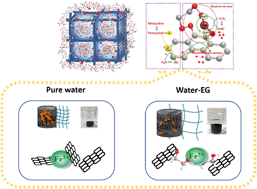
Environ. Sci.: Nano, 2019,6, 388-398
https://doi.org/10.1039/C8EN01339J
CuO and ZnO nanoparticles drive the propagation of antibiotic resistance genes during sludge anaerobic digestion: possible role of stimulated signal transduction
CuO and ZnO NPs benefit ARG propagation by stimulating signal transduction in sludge bacteria.
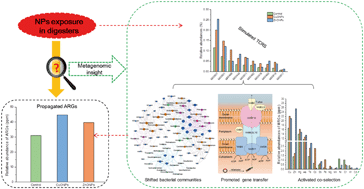
Environ. Sci.: Nano, 2019,6, 528-539
https://doi.org/10.1039/C8EN00370J
About this collection
The Environmental Science Best Papers Initiative identifies a variety of excellent papers published in the Royal Society of Chemistry’s Environmental Science journal family, showcasing great research from across the globe. To celebrate more of the great papers published in Environmental Science: Nano during 2019 which really deserve recognition, we’ve gathered all nominated papers in this special collection.
Read the papers classed as the best of the portfolio at http://rsc.li/enviro-bestpapers and also browse the nominated papers from our sister journals Environmental Science: Water Research & Technology and Environmental Science: Processes & Impacts